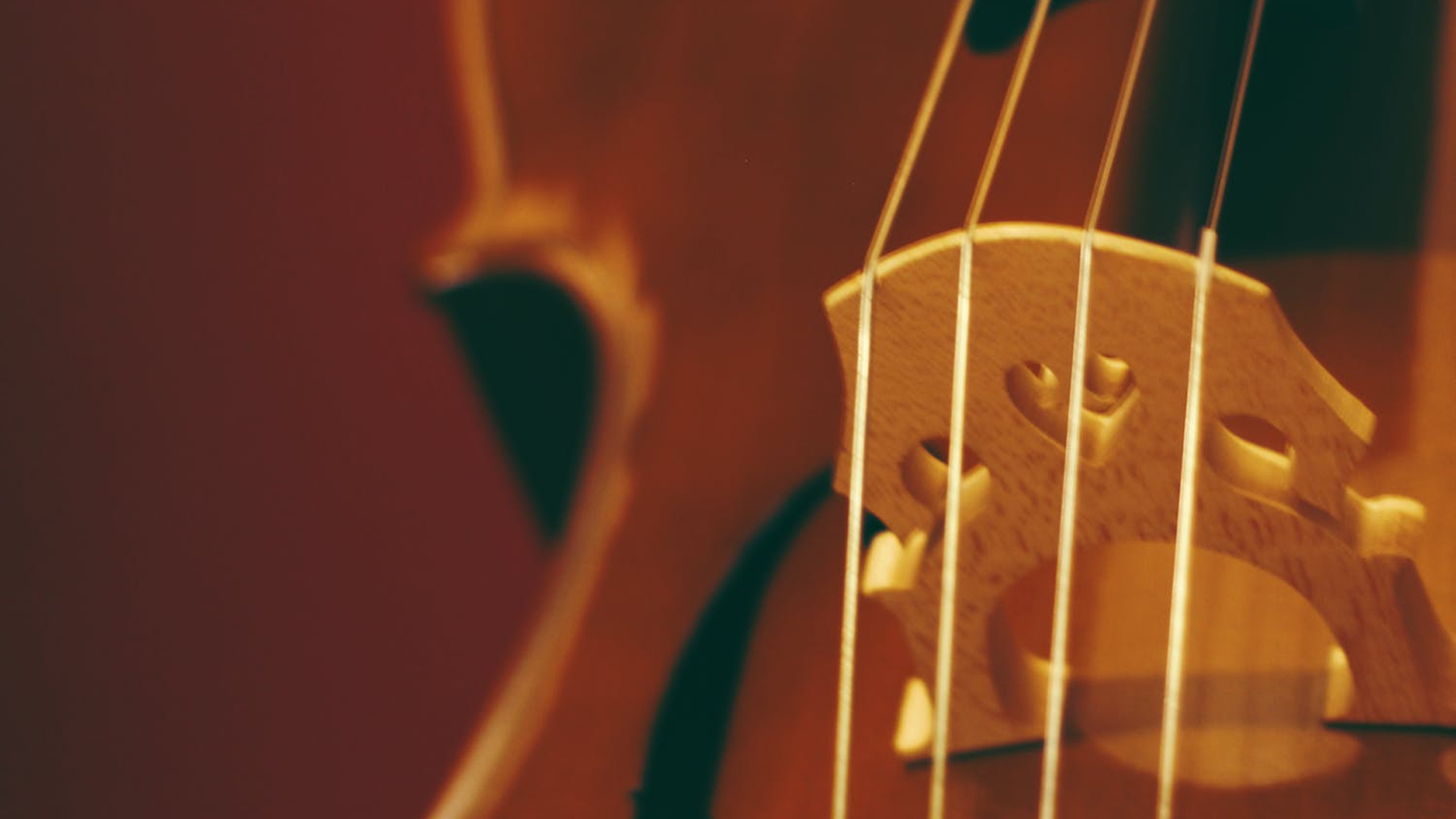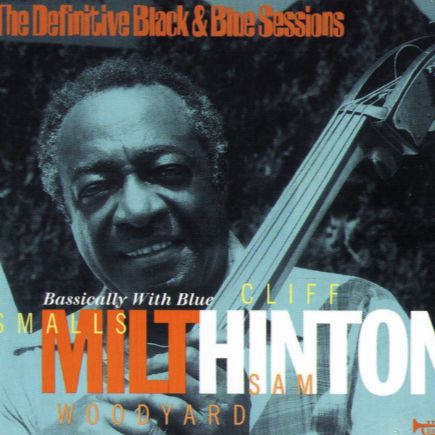Milt Hinton, l’élégance rythmique au service du jazz
Surnommé ‘The Judge’, Milt Hinton demeure l’une des figures incontournables de la contrebasse en jazz, un musicien dont la carrière traverse près de sept décennies, de l’ère du swing aux formes modernes, jusqu’aux portes du XXIe siècle. Reconnu pour son sens harmonique sûr, le son ample et sa remarquable adaptabilité, il a su se maintenir au premier plan dans des contextes musicaux variés, devenant dans les années 1950 l’un des musiciens de session les plus sollicités, aussi bien en studio que sur scène.
Issu d’une riche tradition musicale, Hinton commence par le violon avant d’adopter la contrebasse, instrument qui allait définir son identité artistique. Ses premiers pas professionnels l’amènent à rejoindre l’orchestre du cornettiste Freddie Keppard, avec lequel il enregistre en 1930. En 1936, il intègre l’orchestre flamboyant de Cab Calloway, où il restera jusqu’en 1951. Son jeu, souvent comparé à celui de Jimmy Blanton, le prodigieux bassiste de Duke Ellington, combine une pulsation solide et une expressivité raffinée, qualités qui lui ouvriront les portes de nombreuses collaborations prestigieuses.
Milt Hinton partage ensuite la scène avec Dizzy Gillespie et rejoint les All Stars de Louis Armstrong, confirmant son rôle de pilier rythmique aux côtés des plus grands. Dans les années 1970, il revient au premier plan de la scène jazz grâce à de nombreuses tournées, festivals et concerts en club, consolidant son statut de passeur entre générations.
En 1995, au crépuscule de sa carrière, il participe au projet The Statesmen of Jazz, aux côtés du pianiste Hank Jones et du batteur Osie Johnson. Cette formation, soutenue par la Fédération américaine des sociétés de jazz, visait à promouvoir la musique auprès d’un large public à travers les États-Unis, tout en célébrant l’héritage des maîtres.
Au-delà de son jeu, Hinton a marqué l’histoire par ses innovations techniques, étant l’un des pionniers du slap bass, qui confère à la contrebasse une dimension percussive et vibrante. Mais il laisse aussi une trace précieuse en tant que photographe passionné, ayant capturé avec sensibilité la vie des musiciens de jazz en coulisses. Son ouvrage Bass Line: The Stories and Photographs of Milt Hinton constitue une archive inestimable, où récits et images se conjuguent pour témoigner de la vitalité humaine et artistique d’un univers qu’il a contribué à façonner de l’intérieur.
Milt Hinton, la elegancia rítmica al servicio del jazz
Apodado ‘The Judge‘, Milt Hinton sigue siendo una de las figuras imprescindibles del contrabajo en el jazz, un músico cuya trayectoria abarca casi siete décadas, desde la era del swing hasta las formas modernas, llegando a las puertas del siglo XXI. Reconocido por su sólido sentido armónico, su sonido amplio y su notable versatilidad, supo mantenerse en primera línea en contextos musicales muy diversos, convirtiéndose en los años cincuenta en uno de los músicos de sesión más solicitados, tanto en estudio como en giras.
Formado en una rica tradición musical, Hinton comenzó con el violín antes de adoptar el contrabajo, instrumento que definiría su identidad artística. Sus primeros pasos profesionales lo llevaron al conjunto del cornetista Freddie Keppard, con quien grabó en 1930. En 1936 se incorporó a la orquesta de Cab Calloway, donde permanecería hasta 1951. Su estilo, a menudo comparado con el de Jimmy Blanton, el prodigioso bajista de Duke Ellington, combinaba una pulsación sólida con una expresividad refinada, cualidades que le abrieron las puertas a prestigiosas colaboraciones.
Posteriormente compartió escenario con Dizzy Gillespie y se unió a los All Stars de Louis Armstrong, confirmando su papel como pilar rítmico junto a los más grandes. En los años setenta, volvió al primer plano gracias a numerosas giras, festivales y conciertos en clubes, consolidando su rol de puente entre generaciones.
En 1995, al final de su carrera, participó en el proyecto The Statesmen of Jazz, junto al pianista Hank Jones y el baterista Osie Johnson. Esta formación, apoyada por la Federación Americana de Sociedades de Jazz, buscaba promover la música en todo el país y celebrar el legado de los maestros.
Más allá de su ejecución, Hinton dejó huella por sus innovaciones técnicas, siendo pionero del slap bass, que otorga al contrabajo una dimensión percusiva y vibrante. También se destacó como fotógrafo apasionado, retratando con sensibilidad la vida de los músicos de jazz tras bambalinas. Su obra Bass Line: The Stories and Photographs of Milt Hinton constituye un archivo invaluable que une relatos personales e imágenes históricas, testimonio de la vitalidad humana y artística de un universo que ayudó a construir desde dentro.
Milt Hinton, l’eleganza ritmica al servizio del jazz
Soprannominato ‘The Judge‘, Milt Hinton rimane una delle figure imprescindibili del contrabbasso jazz, un musicista la cui carriera abbraccia quasi settant’anni, dall’era dello swing alle forme moderne, fino alle soglie del XXI secolo. Riconosciuto per il suo sicuro senso armonico, il suono ampio e la notevole adattabilità, seppe mantenersi in primo piano in contesti musicali diversi, diventando negli anni Cinquanta uno dei musicisti di sessione più richiesti, sia in studio che sul palco.
Proveniente da una ricca tradizione musicale, Hinton iniziò con il violino prima di passare al contrabbasso, lo strumento che avrebbe definito la sua identità artistica. I suoi primi passi professionali lo portarono nell’orchestra del cornettista Freddie Keppard, con cui incise nel 1930. Nel 1936 entrò a far parte della celebre orchestra di Cab Calloway, dove rimase fino al 1951. Il suo stile, spesso paragonato a quello di Jimmy Blanton, il prodigioso bassista di Duke Ellington, univa una pulsazione solida a una raffinata espressività, qualità che gli aprirono la strada a numerose collaborazioni di prestigio.
Successivamente condivise il palcoscenico con Dizzy Gillespie e si unì agli All Stars di Louis Armstrong, confermando il suo ruolo di pilastro ritmico accanto ai più grandi. Negli anni Settanta tornò in primo piano grazie a numerose tournée, festival e concerti nei club, consolidando la sua funzione di ponte tra generazioni.
Nel 1995, al termine della sua carriera, partecipò al progetto The Statesmen of Jazz, insieme al pianista Hank Jones e al batterista Osie Johnson. Questa formazione, sostenuta dalla Federazione Americana delle Società di Jazz, aveva l’obiettivo di promuovere la musica in tutto il Paese e celebrare l’eredità dei maestri.
Oltre alla sua esecuzione, Hinton ha segnato la storia con le sue innovazioni tecniche, essendo uno dei pionieri dello slap bass, che conferisce al contrabbasso una dimensione percussiva e vibrante. Fu anche un appassionato fotografo, capace di catturare con sensibilità la vita dei musicisti di jazz dietro le quinte. La sua opera Bass Line: The Stories and Photographs of Milt Hinton rappresenta un archivio inestimabile, dove racconti personali e immagini storiche si intrecciano per testimoniare la vitalità umana e artistica di un mondo che contribuì a plasmare dall’interno.
Milt Hinton, rhythmic elegance in the service of jazz
Nicknamed ‘The Judge‘, Milt Hinton remains one of the essential figures of the jazz bass, a musician whose career stretched across nearly seven decades, from the swing era to modern forms, reaching into the dawn of the 21st century. Known for his reliable harmonic sense, his full sound, and remarkable adaptability, he maintained a leading role in diverse musical settings, becoming in the 1950s one of the most sought-after session players, both in the studio and on tour.
Rooted in a rich musical tradition, Hinton began on the violin before switching to the bass, the instrument that would define his artistic identity. His early professional steps took him into the band of cornetist Freddie Keppard, with whom he recorded in 1930. In 1936, he joined the dazzling orchestra of Cab Calloway, where he remained until 1951. His style, often compared to that of Jimmy Blanton, Duke Ellington’s prodigious bassist, blended a solid pulse with refined expressiveness, qualities that opened the way to many prestigious collaborations.
Hinton later shared the stage with Dizzy Gillespie and joined Louis Armstrong’s All Stars, confirming his role as a rhythmic cornerstone alongside the greats. In the 1970s, he returned to the forefront of the jazz scene through numerous tours, festivals, and club performances, solidifying his status as a bridge between generations.
In 1995, at the twilight of his career, he took part in the project The Statesmen of Jazz, alongside pianist Hank Jones and drummer Osie Johnson. Supported by the American Federation of Jazz Societies, this ensemble sought to promote the music nationwide while celebrating the legacy of the masters.
Beyond his playing, Hinton left an indelible mark with his technical innovations, being one of the pioneers of slap bass, which gave the instrument a percussive, vibrant dimension. He was also a passionate photographer, capturing with sensitivity the behind-the-scenes life of jazz musicians. His book Bass Line: The Stories and Photographs of Milt Hinton stands as an invaluable archive, blending personal anecdotes with historic images to bear witness to the human and artistic vitality of a world he helped shape from within.



